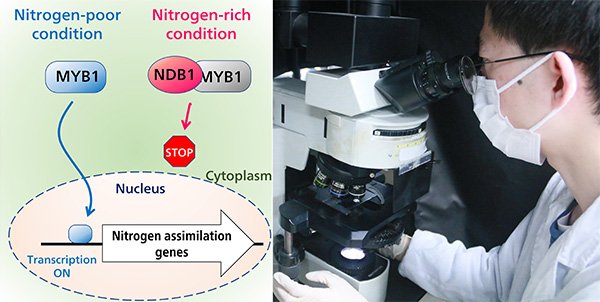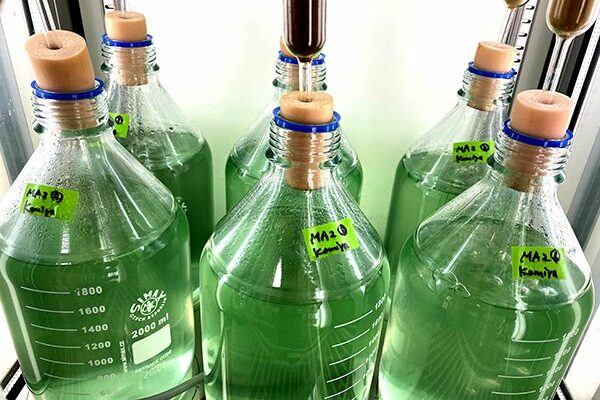A collaborative research group has discovered the protein that inhibits the formation of organic nitrogen compounds in plants. This protein, if manipulated, could potentially be used to encourage plant growth, improving biomass production and crop harvests.
Nitrogen is one of the building blocks of life. Humans need nitrogen to make the amino acids, proteins, and nucleic acids essential for growth, hormones, brain functions, the immune system, and DNA and RNA. Humans, unlike plants, cannot synthesize organic nitrogen molecules. Instead, we rely on plants for our nitrogen intake.
Plants utilise nitrate or ammonium in the environment to synthesize organic nitrogen molecules in a process called nitrogen assimilation. Crop production relies on nitrogen fertilizers to improve the efficiency of nitrogen uptake in crops. Still, the regulatory mechanisms behind nitrogen assimilation have continued to elude scientists.


When environmental nitrogen is poor, the uptake of nitrogen must be done at a high rate. The transcription factor MYB1 is translocated into the nucleus and activates transcription of the nitrogen-assimilation-related genes. In nitrogen-rich conditions, it is conceivable that MYB1 is bound by the NDB1 protein. This interaction interferes with the nuclear translocation of MYB1 and therefore, nitrogen assimilation is suppressed. Credit: Imamura et al.
Multiple proteins mediate nitrogen assimilation. The expression of these proteins is high when the surrounding soil and water contains low amounts of ammonium and nitrate ions, suggesting the existence of a negative regulator dependent on these factors.
Previous research by the group reported that the protein MYB1 serves a crucial role in inducing the expression of genes necessary for nitrogen assimilation, and it becomes inhibited in high nitrogen environments. The current findings revealed that the novel protein NDB1 inactivated MYB1. NDB1 traps MYB1 in the cytoplasm and prevents it from functioning as a transcription factor.
“The NDB1-MYB1 pathway is a key factor in regulating nitrogen assimilation,” says Kazuhiko Igarashi, professor at the Department of Biochemistry at Tohoku University‘s Graduate School of Medicine and co-author of the paper by Baifeng Zhou of the Institute of Innovative Research at Tokyo Institute of Technology. “Our discovery is a breakthrough for the field of plant science.”
The collaborative team led by Sousuke Imamura of the Institute of Innovative Research at Tokyo Institute of Technology also found that deleting the NDB1 gene enabled red alga to maintain the MYB1-dependent nitrate assimilation gene expression even in nitrogen-rich conditions, indicating that manipulating NDB1 can boost plant growth.
Looking ahead, Igarashi is eager to explore the MYB1 transcription factor network further. “We would like to identify other proteins involved in regulating nitrogen assimilation and investigate whether nitrogen assimilation can be elevated through NDB1 manipulation.”
Read the paper: Frontiers in Plant Science
Article source: Tohoku University
Image: The red alga Cyanidioschyzon merolae is a tiny unicellular organism and its architecture is extremely simple. Because of its simplicity, C. merolae can be a great conductor for guiding scientists in their exploration of the plant kingdom. Credit: Imamura et al.








